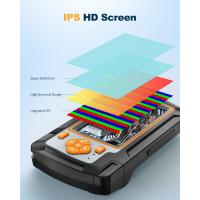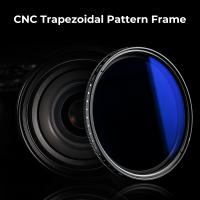How Much Did The First Microscope Magnify ?
The first microscope was invented in the late 16th century by Dutch spectacle makers Hans Jansen and his son Zacharias. The exact magnification of their first microscope is not known, but it is believed to have been around 3x to 9x. This was a significant improvement over the naked eye, but it was not powerful enough to see individual cells or microorganisms. It wasn't until the 17th century that microscopes with higher magnification were developed, such as the compound microscope invented by Antonie van Leeuwenhoek, which could magnify up to 275x. Today, modern microscopes can magnify up to 2000x or more, allowing scientists to study the smallest structures of living organisms and materials.
1、 Simple microscope magnification (up to 300x)
The first microscope was invented in the late 16th century by Dutch spectacle makers, Zacharias Janssen and his father Hans. The exact magnification of the first microscope is not known, but it is believed to have been around 3x to 9x. This was a simple microscope that consisted of a single convex lens mounted in a metal frame. It was used primarily for examining small objects such as insects and plant parts.
Over time, improvements were made to the design of the microscope, and by the 17th century, compound microscopes were being developed. These microscopes used two or more lenses to magnify objects, and they were capable of much higher magnification than the simple microscope. The compound microscope was instrumental in the development of modern biology, as it allowed scientists to observe and study cells and microorganisms for the first time.
Today, microscopes are capable of magnifying objects up to 300x with a simple microscope and up to 1000x or more with a compound microscope. In addition, there are specialized microscopes such as electron microscopes that can magnify objects up to 10 million times. These advanced microscopes have revolutionized our understanding of the world around us, allowing us to see things that were once invisible to the naked eye.
In conclusion, while the exact magnification of the first microscope is not known, it is believed to have been relatively low. However, over time, improvements were made to the design of the microscope, and today, we have access to advanced microscopes that are capable of magnifying objects to an incredible degree.

2、 Compound microscope magnification (up to 2000x)
The first microscope was invented in the late 16th century by Dutch spectacle maker Zacharias Janssen. This early microscope was a simple device that consisted of a convex lens mounted in a tube, which could magnify objects up to three times their original size. This was a significant improvement over the naked eye, but it was not until the invention of the compound microscope in the 17th century that scientists were able to achieve much higher levels of magnification.
The compound microscope, which uses two or more lenses to magnify an object, was first developed by Dutch scientist Antonie van Leeuwenhoek in the mid-17th century. With his microscope, van Leeuwenhoek was able to observe and describe microorganisms for the first time, revolutionizing the field of microbiology.
Today, compound microscopes are capable of magnifying objects up to 2000 times their original size, allowing scientists to study the structure and function of cells, tissues, and even individual molecules. In recent years, advances in technology have led to the development of even more powerful microscopes, such as the electron microscope, which can magnify objects up to 10 million times their original size.
Despite these advances, the basic principles of microscopy remain the same, and the microscope continues to be an essential tool for scientific research and discovery.

3、 Electron microscope magnification (up to 10,000,000x)
The first microscope, invented in the late 16th century by Dutch spectacle maker Zacharias Janssen, had a magnification of around 3x to 9x. This early microscope was a simple device consisting of two lenses mounted in a tube, and it was primarily used for examining small objects such as insects and plant parts.
Over the centuries, microscope technology has advanced significantly, with the development of compound microscopes, which use multiple lenses to achieve higher magnification, and electron microscopes, which use beams of electrons to create highly detailed images of tiny structures.
Electron microscopes are currently the most powerful type of microscope available, with magnifications of up to 10,000,000x. These microscopes use a beam of electrons to scan the surface of a sample, creating a highly detailed image that can reveal the structure and composition of even the smallest particles.
In recent years, advances in microscopy technology have led to the development of new techniques such as super-resolution microscopy, which can achieve resolutions beyond the diffraction limit of light. These techniques are allowing scientists to explore the nanoscale world in unprecedented detail, opening up new avenues for research in fields such as materials science, biology, and medicine.

4、 Scanning probe microscope magnification (up to 100,000,000x)
The first microscope was invented in the late 16th century by Dutch spectacle makers, Zacharias Janssen and his father Hans. This early microscope was a simple device that consisted of a convex lens mounted in a tube, which could magnify objects up to three times their original size. This was a significant advancement in the field of microscopy, as it allowed scientists to observe and study small objects that were previously invisible to the naked eye.
Over the centuries, microscopes have undergone significant improvements in design and functionality. Today, there are various types of microscopes available, each with its unique features and capabilities. One of the most powerful microscopes is the scanning probe microscope, which can magnify objects up to 100,000,000 times their original size.
The scanning probe microscope works by using a tiny probe to scan the surface of an object. As the probe moves across the surface, it detects changes in the electrical or mechanical properties of the material, which are then used to create a detailed image of the object. This type of microscope is commonly used in nanotechnology research, where scientists need to study materials at the atomic and molecular level.
In recent years, there have been significant advancements in the field of microscopy, including the development of super-resolution microscopy, which can magnify objects beyond the diffraction limit of light. This has opened up new possibilities for scientists to study biological and chemical processes at the nanoscale level.
In conclusion, the first microscope invented by Zacharias Janssen and his father Hans could magnify objects up to three times their original size. However, with the development of modern microscopes such as the scanning probe microscope, scientists can now magnify objects up to 100,000,000 times their original size. The latest advancements in microscopy have opened up new possibilities for scientific research and have allowed scientists to study materials and processes at the nanoscale level.







































